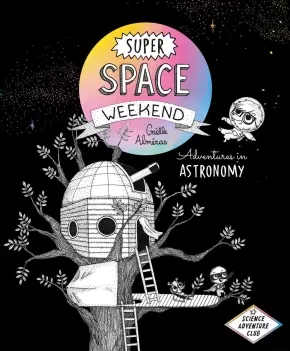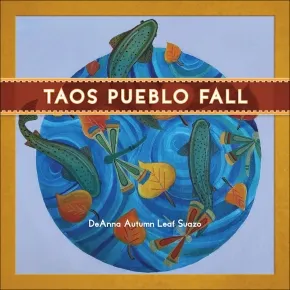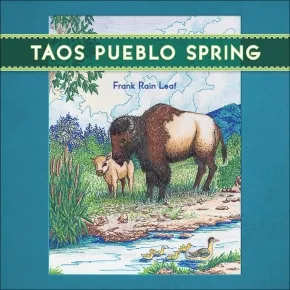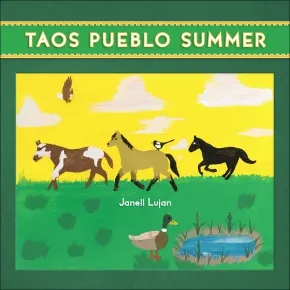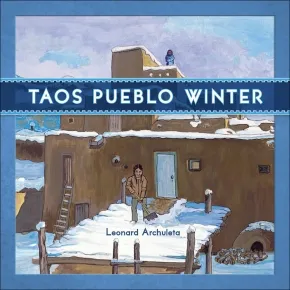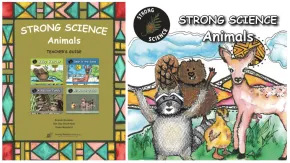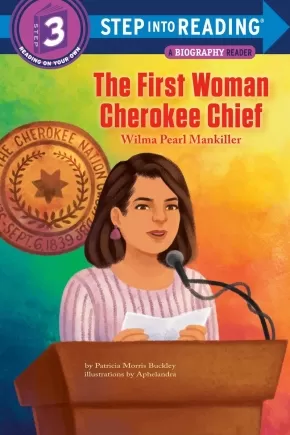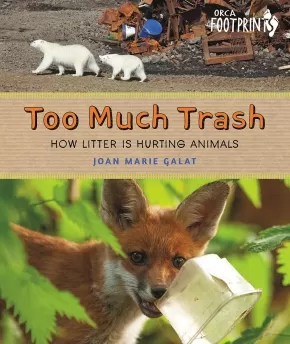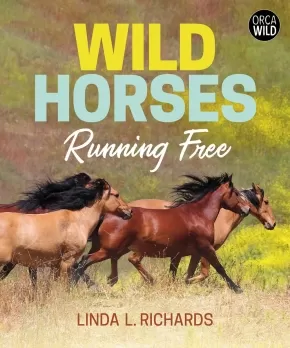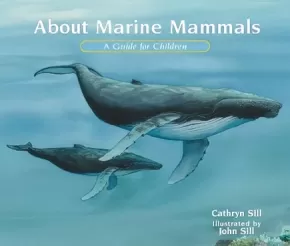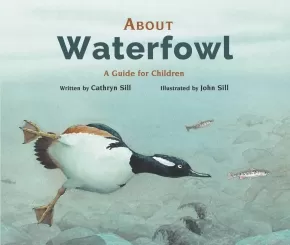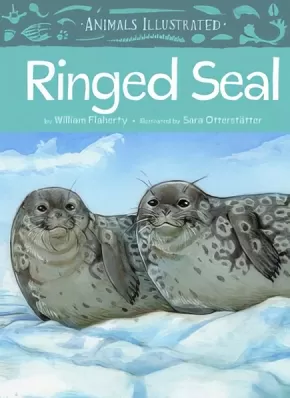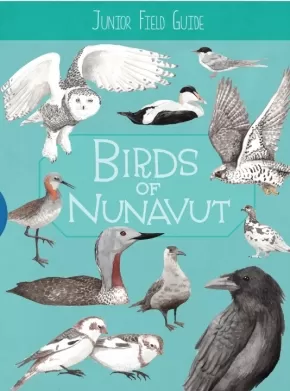
Series
76
-
90
of
406 Results;
Sort By
Go To
of 28
Strong Science - Animals: The Ducks Fly Away
 $7.50
$7.50

Artists:
Format:
Paperback
Text Content Territories:
Indigenous Canadian;
Grade Levels: Kindergarten; 1;
ISBN / Barcode: 9781771746175
Synopsis:
Synopsis:
This story begins with the ducks seeing the leaves on the trees turning red and yellow. How do you think this story ends?
There are four seasons in the year: winter, spring, summer, and fall. Which season is this story about?
Educator & Series Information
Recommended for grade 1 students, but may also be useful in kindergarten classrooms.
Strong Science - Animals is a language-based science series for primary students featuring animals that all Canadian students will recognize. Photographs and Indigenous artwork illustrate the series. Common learning objectives in science curricula across Canada are addressed, and suggestions for extending the learning to other curriculum areas, including Indigenous cultural awareness, language arts, math, and art, are included in the teacher’s guide. The sixteen books in this series are grouped into four levels that increase in complexity, designed to accommodate students with various reading abilities within a classroom. This feature facilitates the use of this series in literacy programs along with the Strong Readers series.
The Ducks Fly Away is an EP3 (Early Primary 3) book in the Strong Science - Animals series. Font size decreases as language complexity and word count increase across levels: EP1 books have approximately 40 words, EP2 books have approximately 60 words, EP3 books have approximately 80 words, and EP4 books have approximately 100 words.
A teacher's guide for Strong Science - Animals is available: Strong Science - Animals: Teacher's Guide
Authenticity Note: This book has received the Indigenous Text label because the author is Indigenous (Lakota) and the featured animal holds cultural significance in many Indigenous cultures. The engaging story provides factual information in an easy-to-read format for children to learn science concepts and build literacy skills. It promotes respect for animals and Mother Earth, and its illustrations communicate additional cultural information through Lakota symbolism and designs. Further cultural connections are identified in the teacher's guide. Refer to the guide to explore the book's Indigenous connections fully. It is up to readers to determine if the book will work as a stand-alone authentic Indigenous text for their purposes.
Additional Information
16 Pages | 6.5" x 5.5" | Paperback | ISBN: 9781771746175
Super Space Weekend: Adventures in Astronomy
$19.95
Artists:
Format:
Paperback
ISBN / Barcode: 9781778401091
Synopsis:
Synopsis:
This non-fiction graphic novel for kids 7+ takes readers on a thrilling voyage through our universe. Get ready for the ultimate astronomy adventure!
It's a beautiful evening when Squeak, Orni, and Castor head out for a weekend of camping. But Squeak has a surprise: he's hosting them all in his observatory, high at the top of a tree. The tree house is delightful—and fully equipped for the most incredible discoveries: in the sky and the stars, through the galaxy and beyond.
Readers join the three friends as they explore the night sky, our solar system, and how our universe was created. Along the way, they share fascinating facts about astronomy, such as how to find the North Star, the difference between comets and asteroids, and the history of space exploration.
Super Space Weekend features:
- Fascinating information about astronomy and space reviewed by scientists, including an astrophysicist and planetary scientist. Discover how to find the North Star, learn about the history of space exploration, and more!
- Comic-style illustrations: shares Squeak, Orni and Castor’s thrilling space adventures through a graphic novel format
Captivating, funny, and highly informative, Super Space Weekend is the ultimate introduction to the world of astronomy.
Educator & Series Information
Recommended for ages 7 to 12.
This book is part of the Science Adventure Club series.
Curriculum Connections: Space Science, Solar System, STEM.
Additional Information
96 pages | 8.00" x 9.75" | Paperback
Taos Pueblo Fall (BB)
$14.95
Artists:
Format:
Board Book
Text Content Territories:
Indigenous American; Native American; Taos Pueblo;
Grade Levels: Preschool;
ISBN / Barcode: 9781570673917
Synopsis:
Synopsis:
This delightful board book, written without text, was created by the Taos Pueblo's Tiwa Language Program to preserve the Tiwa culture and revitalize the Tiwa language by teaching it to younger generations. Many other Indigenous languages also need revitalizing, so it is the hope of the Taos Pueblo's Tiwa Language Program that other American Indian Nations will find the books in the Toas Pueblo Four Seasons series useful to teach their language to young children. The beautiful, hand-drawn illustrations will also teach young children about the four seasons of the year. All proceeds of the book support the Taos Pueblo's Tiwa Language Program.
This text-free board book allows Indigenous nations to teach their own languages to children.
Educator & Series Information
This wordless book is part of the Taos Pueblo Four Seasons series.
We are the "Red Willow People" of Taos Pueblo and have sustained our ancient village as one of the longest continuously inhabited communities, for over 1,000 years. Taos Pueblo is located in northern New Mexico and our Tiwa language is a dialect of the Tanoan language, which is not a written language. Traditionally we learn our Tiwa Language through oral tradition but we are in danger of losing our ancient language due to colonization, modernization, and the shift from Tiwa as our first language to English as our first language. The efforts of the Taos Pueblo Tiwa Language Program are focused on revitalizing the Tiwa Language and culture by protecting and preserving it, through teaching it to our younger generations.
This text-free board book allows Indigenous nations to teach their own languages to children.
Additional Information
22 pages | 8" x 8" | Board Book
Taos Pueblo Spring (BB)
$14.95
Artists:
Format:
Board Book
Text Content Territories:
Indigenous American; Native American; Taos Pueblo;
Grade Levels: Preschool;
ISBN / Barcode: 9781570674143
Synopsis:
Synopsis:
This delightful board book, written without text, was created by the Taos Pueblo's Tiwa Language Program to preserve the Tiwa culture and revitalize the Tiwa language by teaching it to younger generations. Many other Indigenous languages also need revitalizing, so it is the hope of the Taos Pueblo's Tiwa Language Program that other American Indian Nations will find the books in the Toas Pueblo Four Seasons series useful to teach their language to young children. The beautiful, hand-drawn illustrations will also teach young children about the four seasons of the year. All proceeds of the book support the Taos Pueblo's Tiwa Language Program.
This text-free board book allows Indigenous nations to teach their own languages to children.
Educator & Series Information
This wordless book is part of the Taos Pueblo Four Seasons series.
We are the "Red Willow People" of Taos Pueblo and have sustained our ancient village as one of the longest continuously inhabited communities, for over 1,000 years. Taos Pueblo is located in northern New Mexico and our Tiwa language is a dialect of the Tanoan language, which is not a written language. Traditionally we learn our Tiwa Language through oral tradition but we are in danger of losing our ancient language due to colonization, modernization, and the shift from Tiwa as our first language to English as our first language. The efforts of the Taos Pueblo Tiwa Language Program are focused on revitalizing the Tiwa Language and culture by protecting and preserving it, through teaching it to our younger generations.
This text-free board book allows Indigenous nations to teach their own languages to children.
Additional Information
22 pages | 8" x 8" | Board Book
Taos Pueblo Summer (BB)
$14.95
Artists:
Format:
Board Book
Text Content Territories:
Indigenous American; Native American; Taos Pueblo;
Grade Levels: Preschool;
ISBN / Barcode: 9781570673696
Synopsis:
Synopsis:
This delightful board book, written without text, was created by the Taos Pueblo's Tiwa Language Program to preserve the Tiwa culture and revitalize the Tiwa language by teaching it to younger generations. Many other Indigenous languages also need revitalizing, so it is the hope of the Taos Pueblo's Tiwa Language Program that other American Indian Nations will find the books in the Toas Pueblo Four Seasons series useful to teach their language to young children. The beautiful, hand-drawn illustrations will also teach young children about the four seasons of the year. All proceeds of the book support the Taos Pueblo's Tiwa Language Program.
This text-free board book allows Indigenous nations to teach their own languages to children.
Educator & Series Information
This wordless book is part of the Taos Pueblo Four Seasons series.
We are the "Red Willow People" of Taos Pueblo and have sustained our ancient village as one of the longest continuously inhabited communities, for over 1,000 years. Taos Pueblo is located in northern New Mexico and our Tiwa language is a dialect of the Tanoan language, which is not a written language. Traditionally we learn our Tiwa Language through oral tradition but we are in danger of losing our ancient language due to colonization, modernization, and the shift from Tiwa as our first language to English as our first language. The efforts of the Taos Pueblo Tiwa Language Program are focused on revitalizing the Tiwa Language and culture by protecting and preserving it, through teaching it to our younger generations.
This text-free board book allows Indigenous nations to teach their own languages to children.
Additional Information
22 pages | 8" x 8" | Board Book
Taos Pueblo Winter (BB)
$14.95
Artists:
Format:
Board Book
Text Content Territories:
Indigenous American; Native American; Taos Pueblo;
Grade Levels: Preschool;
ISBN / Barcode: 9781570673450
Synopsis:
Synopsis:
This delightful board book, written without text, was created by the Taos Pueblo's Tiwa Language Program to preserve the Tiwa culture and revitalize the Tiwa language by teaching it to younger generations. Many other Indigenous languages also need revitalizing, so it is the hope of the Taos Pueblo's Tiwa Language Program that other American Indian Nations will find the books in the Toas Pueblo Four Seasons series useful to teach their language to young children. The beautiful, hand-drawn illustrations will also teach young children about the four seasons of the year. All proceeds of the book support the Taos Pueblo's Tiwa Language Program.
This text-free board book allows Indigenous nations to teach their own languages to children.
Educator & Series Information
This wordless book is part of the Taos Pueblo Four Seasons series.
We are the "Red Willow People" of Taos Pueblo and have sustained our ancient village as one of the longest continuously inhabited communities, for over 1,000 years. Taos Pueblo is located in northern New Mexico and our Tiwa language is a dialect of the Tanoan language, which is not a written language. Traditionally we learn our Tiwa Language through oral tradition but we are in danger of losing our ancient language due to colonization, modernization, and the shift from Tiwa as our first language to English as our first language. The efforts of the Taos Pueblo Tiwa Language Program are focused on revitalizing the Tiwa Language and culture by protecting and preserving it, through teaching it to our younger generations.
This text-free board book allows Indigenous nations to teach their own languages to children.
Additional Information
22 pages | 7.90" x 7.90" | Board Book
Teacher Resource Bundle: Strong Science - Animals
 $135.00 $150.00
$135.00 $150.00

Text Content Territories:
Indigenous Canadian; First Nations; Sioux; Lakota; Hunkpapa;
Grade Levels: Kindergarten; 1;
ISBN / Barcode: 9781771746663
Synopsis:
Synopsis:
This bundle includes one copy of each of the 16 Strong Science - Animals titles and the accompanying Strong Science: Animals - Teacher's Guide.
About the Strong Science - Animals Series
Strong Science - Animals is a language-based science series for primary students featuring animals that all Canadian students will recognize. Photographs and Indigenous artwork illustrate the series. Common learning objectives in science curricula across Canada are addressed, and suggestions for extending the learning to other curriculum areas, including Indigenous cultural awareness, language arts, math, and art, are included in the teacher’s guide. The sixteen books in this series are grouped into four levels that increase in complexity, designed to accommodate students with various reading abilities within a classroom. This feature facilitates the use of this series in literacy programs along with the Strong Readers series.
Books in this series are divided into four levels: Early Primary 1 (EP1); Early Primary 2 (EP2); Early Primary 3 (EP3); Early Primary 4 (EP4). Font size decreases as language complexity and word count increase across levels: EP1 books have approximately 40 words, EP2 books have approximately 60 words, EP3 books have approximately 80 words, and EP4 books have approximately 100 words.
Each book is 16 pages, 6.5" x 5.5", and paperback
About the Strong Science - Animals: Teacher's Guide
This teacher’s guide supports a language-based Science unit for early primary classrooms, using the sixteen titles in Strong Nations Publishing’s Strong Science - Animals series.
The unit introduces early primary students to four easily recognizable animals that live in or near many communities in Canada: beaver, black-tailed deer, mallard duck, and raccoon. While learning about the animals, students will gain knowledge and skills mandated by Ministry of Education Science curricula in Canadian provinces and territories.
In addition, this teacher’s guide addresses other curriculum areas— Language Arts, Math, Social Studies, and Art—and provides information to help develop an appreciation for and understanding of Indigenous cultures.
This teacher-friendly, comprehensive teacher’s guide provides:
• lesson plans to introduce the books in the Strong Science - Animals series;
• lesson plans to address knowledge and skills common to Canadian Science curricula;
• activities to integrate the unit across the curriculum;
• activities to wrap up the unit
The teacher's guide is 170 Pages, 8.5" x 11", and coil bound
Additional Information
Teacher Resource Bundle ISBN: 9781771746663
The First Woman Cherokee Chief: Wilma Pearl Mankiller
$7.99
Format:
Paperback
Text Content Territories:
Indigenous American; Native American; Cherokee; Cherokee Nation (Cherokee Nation of Oklahoma);
ISBN / Barcode: 9780593568507
Synopsis:
Synopsis:
Find out all about Wilma Pearl Mankiller, the first woman Cherokee chief whose image will appear on a 2022 US quarter, in this Step 3 Biography Reader.
In 1985, Wilma Pearl Mankiller became the first woman Principal Chief of the Cherokee Nation. She had to convince her people that the chief should be the best person for the job, man or woman.
Before the English came to what is now the United States, Cherokee women and men shared the leadership of the tribe. This created balance. But the English colonists told the Native People that men should be in charge.
It stayed that way for many years, until Wilma Pearl Mankiller made history. She used the concept of gaduji, of everyone helping each other, to make the Cherokee Nation strong.
Step 3 Readers feature engaging characters in easy-to-follow plots and popular topics—for children who are ready to read on their own.
Reviews
“This work is historically accurate on an underrepresented topic in the curriculum.” —School Library Journal
Educator & Series Information
Recommended for ages 5 to 8.
This book is part of the Step Into Reading series. This series is designed to give every child a successful reading experience. The grade levels are only guides; children will progress through the steps at their own speed, developing confidence in their reading. The F&P Text Level on the back cover serves as another tool to help you choose the right book.
Step 3 Readers feature engaging characters in easy-to-follow plots and popular topics—for children who are ready to read on their own.
Additional Information
48 pages | 6.06" x 9.00" | Paperback
Too Much Trash: How Litter Is Hurting Animals
$21.95
Format:
Hardcover
ISBN / Barcode: 9781459831827
Synopsis:
Synopsis:
Litter is not only an eyesore but a serious threat to animals and their habitats. We can all work together to keep the planet healthy and clean.
Did you know that gum on the sidewalk is litter? Even a banana peel that is thrown in a ditch is litter. Trash poses a threat to animals everywhere, including pets, farm animals and wildlife. They can get injured or trapped in the litter and even eat garbage that makes them sick.
In Too Much Trash: How Litter Is Hurting Animals, we discover how garbage ends up everywhere—from city streets and the wilderness to farmland and the ocean. But there's good news: litter is a problem everyone can help prevent. Around the world, kids and adults are finding ways to take out the trash. Find out how you can help clean up the planet for all species.
Reviews
“Lively design layouts with discrete, digestible bits of text make the book accessible and inspiring. Showing how refuse harms humans and other animals, this work should move readers to act.” — Kirkus Reviews
Educator & Series Information
This book is part of the Orca Footprint series. Kids today inhabit a world full of complex—and often mystifying—environmental issues. Orca Footprints aim to help kids answer their questions about the state of the natural world with well-researched, simply-expressed information and powerful images. With topics such as food production, water, cycling and sustainable energy, these books will inspire kids to take action.
Recommended for ages 9-12.
Additional Information
48 pages | 8.00" x 9.50" | Hardcover
Wild Horses: Running Free
$24.95
Format:
Hardcover
Text Content Territories:
Indigenous;
ISBN / Barcode: 9781459825598
Synopsis:
Synopsis:
Wild horses are legendary, but today their very existence is under threat from a changing environment, politics and less protected spaces to roam free.
These animals live all over the world, including the iconic mustangs in North America—a symbol of freedom and the American West. Today what we thought we knew about the history of wild horses and where they came from is changing. What makes a horse wild? Where do they live and how did they end up there? What is the relationship between wild horses and Indigenous Peoples? How are governments and citizens working for or against them?
In this book, readers discover the history, biology and ecology of wild horses and the key role young people are playing in protecting wild horse populations to keep them running free for generations to come.
Educator & Series Information
Recommended for ages 9 to 12.
This book is part of the Orca Wild series that examines the intricacies of animals, ecosystems, humans and our relationships to each other.
Includes some Indigenous content.
Additional Information
96 pages | 7.50" x 9.00" | 50 Colour Photographs, 1 Index | Hardcover
About Marine Mammals: A Guide for Children
$7.99
Artists:
Format:
Paperback
ISBN / Barcode: 9781682632888
Synopsis:
Synopsis:
A thoughtful first glimpse into the world of marine mammals--from the small, playful sea otter to the gigantic blue whale.
With beautifully detailed illustrations, About Marine Mammals tells children what is essential for understanding and appreciating marine mammals. An afterword, which includes a glossary and recommended books and websites, provides further detail for children and their parents about a wide variety of marine mammals.
Former teacher Cathryn Sill and noted wildlife illustrator John Sill, use clear, informative text and illustrations to explain to children what marine mammals are, what they do, and how they live.
Educator & Series Information
Recommended for ages 3 to 7.
This book is a part of the About Habitats series.
Additional Information
48 pages | 10.00" x 8.50" | Paperback
About Waterfowl: A Guide for Children
$24.99
Artists:
Format:
Hardcover
ISBN / Barcode: 9781682632345
Synopsis:
Synopsis:
An informative and entertaining introduction for young children to the amazing birds that live near water in all types of habitats.
In this addition to the About… series, award-winning author Cathryn Sill uses simple, easy-to-understand language to teach children what waterfowl are, where they live, what they eat, and how they move.
John Sill’s detailed, full-color illustrations show the characteristics of different types of waterfowl—from the Trumpeter Swans of northwestern North America to the Bar-headed Geese of central Asia.
Young learners who may only be familiar with the ducklings and geese on local ponds and lakes will be delighted to discover the amazing variety of waterfowl in the world. A glossary and afterword provide further fascinating details about waterfowl that will inspire readers to learn more.
Educator & Series Information
Recommended for ages 3 to 7.
This book is a part of the About Habitats series.
Additional Information
48 pages | 10.00" x 8.50" | Hardcover
Animals Illustrated: Ringed Seal
$15.95
Artists:
Format:
Hardcover
Text Content Territories:
Indigenous Canadian; Inuit;
ISBN / Barcode: 9781772273700
Synopsis:
Synopsis:
Animals Illustrated mixes fun-filled animal facts suitable for the youngest of readers with intricately detailed illustrations to create a unique and beautiful collection of children’s non-fiction books about Arctic animals.
Each volume contains first-hand accounts from authors who live in the Arctic, along with interesting facts on the behaviours and biology of each animal. In this book, kids will learn what ringed seals eat, where they live, how they raise their babies, and other interesting facts, like how deep they can dive and how they are amazing diggers!
Educator & Series Information
This book is part of the non-fiction Animals Illustrated series, which mixes fun-filled animal facts suitable for the youngest of readers with intricately detailed illustrations to create a unique and beautiful collection of children’s non-fiction books on Arctic animals. Each volume contains firsthand accounts from authors who live in the Arctic, along with interesting facts on the behaviours and biology of each animal.
Recommended Ages: 6 to 8.
Available in French: Phoque annelé
Additional Information
28 pages | 6.50" x 9.00" | Hardcover
Better Connected: How Girls Are Using Social Media for Good
$24.95
Format:
Hardcover
Text Content Territories:
Indigenous;
ISBN / Barcode: 9781459828575
Synopsis:
“A fresh take on empowering young girls in our a new rapidly advancing technological age. Pushing the boundaries, the young girls in the book inspire the old generation and the new.” — The Source
Synopsis:
The online world has real dangers, but girls around the world are using social media to create positive change and practice good digital citizenship.
You've probably seen media stories about the ways girls interact online, with headlines like "Depression in Girls Linked to Higher Use of Social Media," or "Half of Girls Are Bullied on Social Media." Better Connected focuses on the less-recognized and positive aspects of the online experiences of girls. From environmental activism to gun control, immigration policy to education access, girls are leading the way. They're showing up, teaming up and speaking up. With profiles of real changemakers and practical tools for getting started, Better Connected is an inspiring look at the amazing things girls can accomplish online.
Reviews
“Will provide [readers] with inspiration and resources...Adult readers, both teacher and parents, who are sometimes dismissive of, or dismayed by, the amount of time their students or children are spending on social media, can learn about the positive aspects of those online experiences. Recommended.” — CM: Canadian Review of Materials
“Both a history of social media and a guide to using it in a positive way…The usefulness of the information, and the breadth of support it offers for additional purposes, more than justifies its place on library shelves. Recommended” — School Library Connection
“The Kyi's have found ways to bring girls' voices and actions to the forefront as change-makers...Perfect for those who are exploring social media for the first time...Illustrations and layout designs from queer-Mestizx/Latinx artist Vivian Rosas bring the content to life.” —Canadian Children's Book News
“A fresh take on empowering young girls in our a new rapidly advancing technological age. Pushing the boundaries, the young girls in the book inspire the old generation and the new.” — The Source
Educator & Series Information
Recommended for ages 9 to 12.
This book is part of the Orca Think series.
Contains some, but limited, Indigenous content.
Additional Information
102 pages | 7.00" x 9.00" | Hardcover
Birds of Nunavut
$14.95
Artists:
Format:
Paperback
Text Content Territories:
Indigenous Canadian; Inuit;
ISBN / Barcode: 9781774505625
Synopsis:
Synopsis:
There are a lot of different types of birds living in Nunavut. From snowy owls to rock ptarmigans, learn all about what each bird looks like, how they live, what they eat, their migration patterns, and more. This science book combines colourful illustrations and photographs in a handy field guide filled with interesting facts about birds.
Educator & Series Information
Recommended for ages 8 to 10.
This book is part of the Junior Field Guide series. Perfect for learning all about living things in the Arctic! These Junior Field Guides give information and interesting facts about the different animals that live in Nunavut.
Additional Information
32 pages | 7.50" x 10.00" | Paperback
Sort By
Go To
of 28


